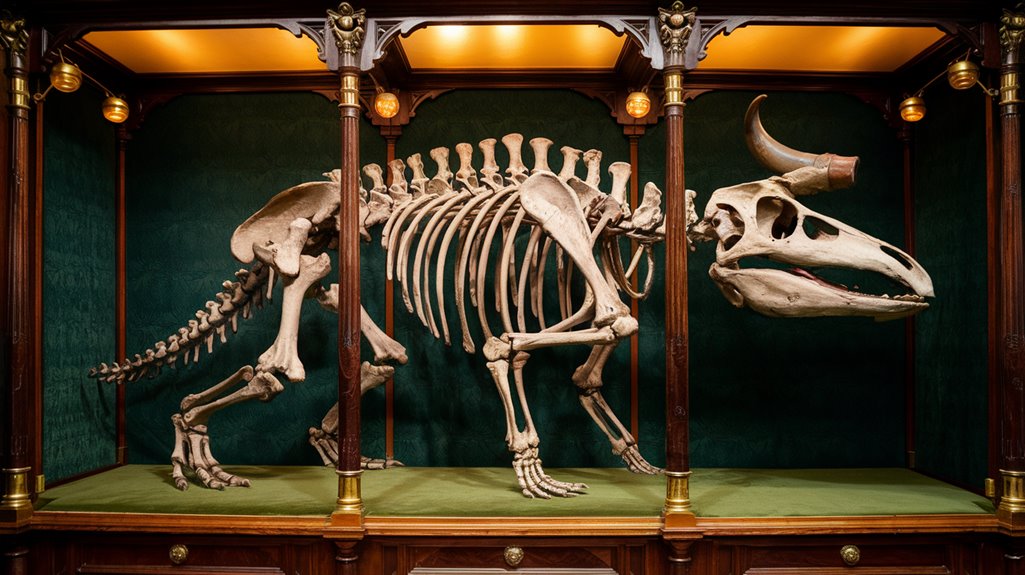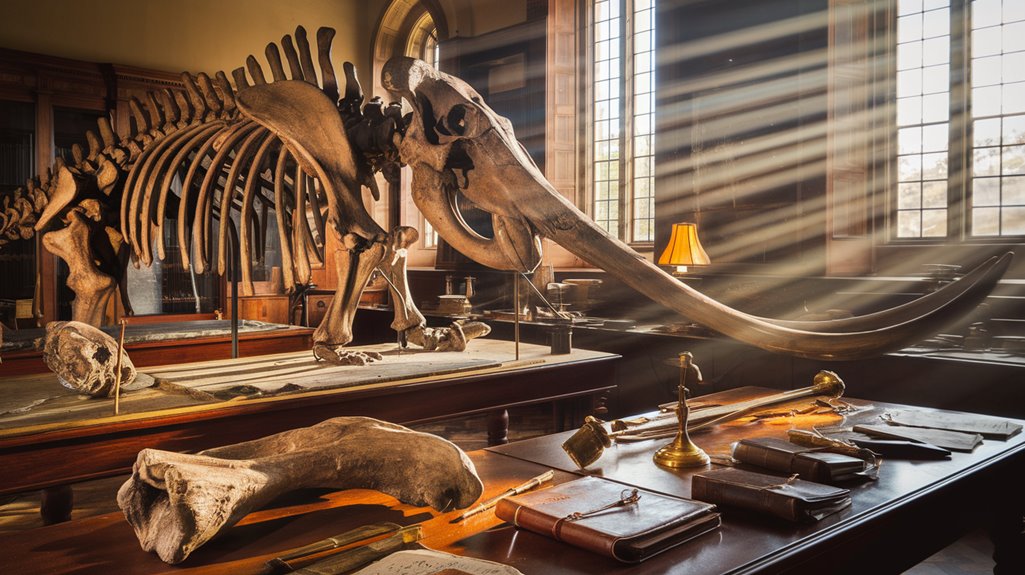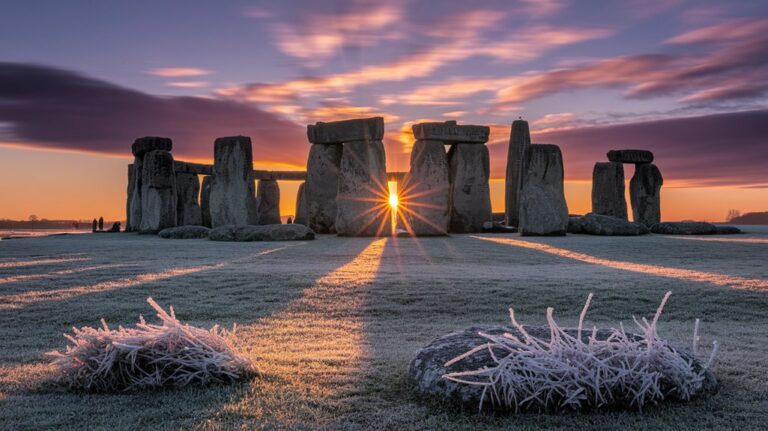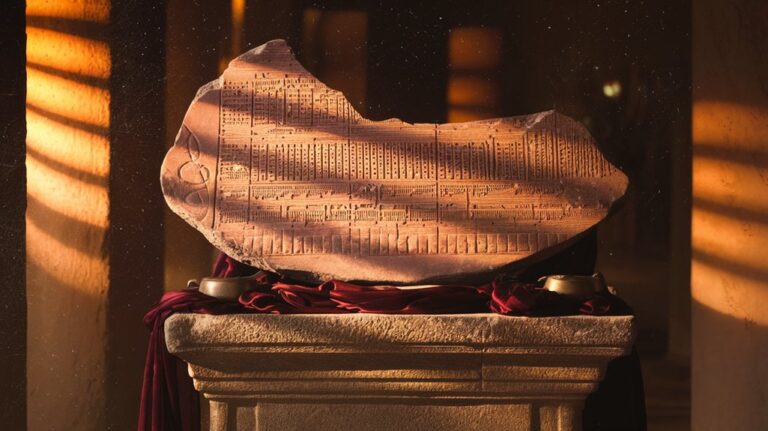Dino Discoveries: Early Fossil Explanations Gone Wild
Today's precise laser scanning of fossils stands in stark contrast to the wild guesses of early bone hunters. You've probably learned about dinosaurs through carefully researched museum exhibits and detailed scientific papers, but earlier explanations were far more creative. When you consider how 17th-century scholars confused dinosaur bones for biblical giants and mythical dragons, you'll understand why modern paleontology emerged from a tangle of fascinating mistakes that shaped our understanding of prehistoric life.
Giants Among Us: Early Misidentifications of Dinosaur Bones
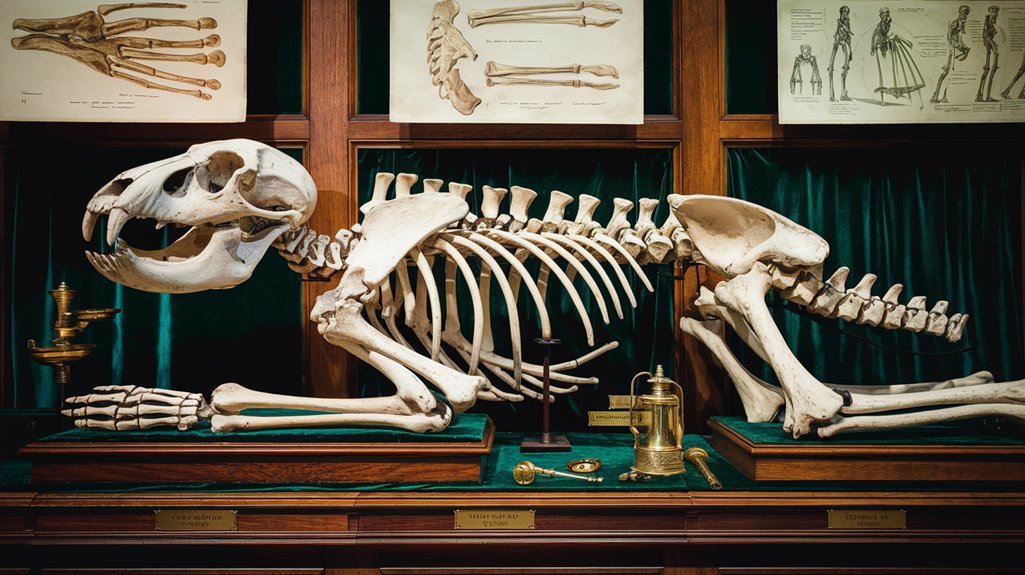
When early scientists first encountered dinosaur bones, they faced a perplexing mystery that led to numerous misidentifications. You'll find fascinating examples like Robert Plot's 1677 discovery in Oxfordshire, where he mistook what was likely a Megalosaurus femur for an elephant bone. Plot later proposed the bone belonged to a human giant from biblical times.
These misleading fossils challenged researchers who lacked reference points for comparison. The remarkable discovery of Iguanodon in 1822 by the Mantells led scientists to believe it was simply a giant iguana-like creature.
Identification challenges weren't limited to single bones. Even when scientists found more complete specimens, they made significant errors.
You might be surprised to learn that Edward Drinker Cope placed Elasmosaurus's head on the wrong end of its body in 1868, while Cetiosaurus was completely misclassified in 1841.
Early paleontologists often confused dinosaur remains with more familiar creatures like fish and crocodiles, demonstrating how limited knowledge led to substantial misinterpretations.
From Dragons to Reality: The Birth of Dinosaur Science
Although people once attributed mysterious fossil findings to dragons and giants, the birth of dinosaur science emerged through methodical research in the early 1800s.
You'll find the turning point came when William Buckland correctly identified the Megalosaurus in 1824, examining its teeth, jaw, and limbs to determine it was an extinct carnivorous lizard.
The dinosaur terminology origins trace back to Sir Richard Owen, who coined "Dinosauria" in 1842, while fossil identification methods grew more sophisticated through discoveries across continents. Buckland's engaging teaching style included using a hyena skull during lectures to demonstrate the importance of anatomical features.
When Ferdinand Hayden found North America's first dinosaur remains in 1854, and Joseph Leidy described a complete skeleton showing bipedalism, it revolutionized our understanding of these ancient creatures.
Scientists learned to gather evidence from bones, teeth, footprints, and even fossilized eggs to piece together dinosaur behavior and diet. Modern researchers have discovered that fossils exist worldwide, with specimens found on all seven continents.
The Plot Twist: How a Human Giant Turned Out to Be Something Else
The misidentification of fossils didn't end with dragons and mythical beasts – even respected scientists once mistook extinct creatures for giant humans. The most famous case involved a fossil that was proudly named "Homo Diluvii Testis," believed to be an antediluvian giant, until Georges Cuvier revealed it was actually a giant salamander in 1811.
A similar pattern emerged in China where scientists discovered ancient skulls exhibiting Neanderthal-like features alongside traits of modern humans. You can see this pattern of fossil misidentification continuing into modern times with the Julcuy Giant discovered in Ecuador. While initially touted as a seven-foot-tall ancient human, careful measurements of the femur revealed it was simply an Indigenous American man of average height, standing between 5 feet and 5'4". The discovery was particularly challenging to investigate since most remains were destroyed during the heavy rains of 2023.
These cases remind us how essential accurate scientific analysis is, and how easily measurements and interpretations can be exaggerated without proper methodology.
When Legends Meet Facts: Tales of Ancient Monsters
Throughout history, myths about fantastical creatures have emerged from our ancestors' attempts to make sense of mysterious fossil discoveries.
When you look at fossil folklore across cultures, you'll find fascinating connections between prehistoric remains and legendary beasts.
Take the griffin, for example. This mythical creature's origins likely stem from ancient Scythian gold miners stumbling upon Protoceratops fossils in the Gobi Desert.
Similarly, you might be surprised to learn that the one-eyed Cyclops myth probably started when Greeks discovered dwarf elephant skulls, mistaking their large nasal cavities for single eye sockets.
Even the fearsome dragons of various cultures can be traced to discoveries of woolly mammoth and rhino bones.
These tales show how our ancestors created rich mythical origins to explain the extraordinary fossils they encountered.
In 1824, science began to separate fact from fiction when William Buckland introduced the first named dinosaur, Megalosaurus.
Ancient civilizations took these discoveries seriously, with many fossils being carefully displayed in temples and examined by scholars of the time.
Breaking Ground: The First Steps in Understanding Prehistoric Life
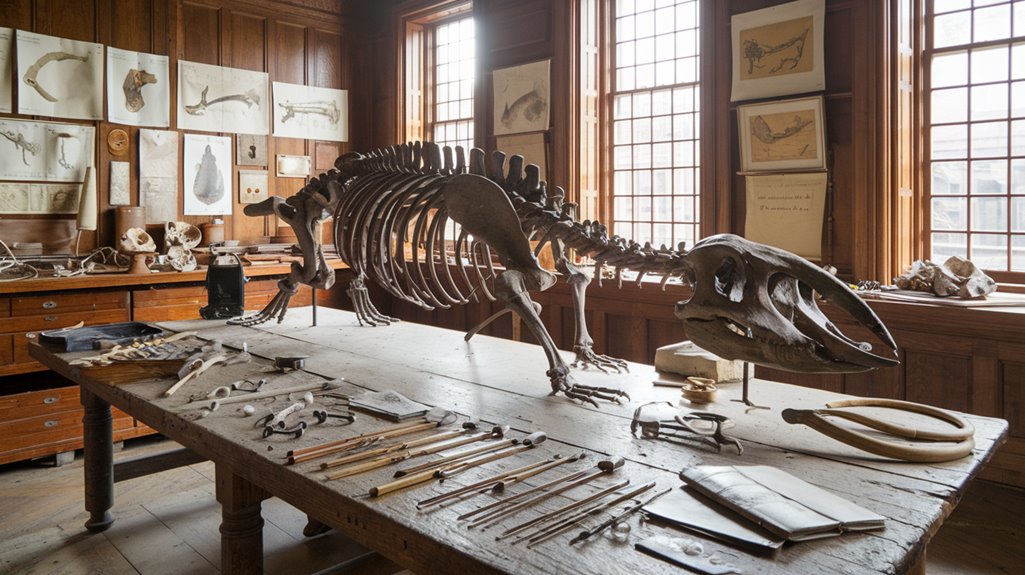
From ancient Greek philosophers to pioneering Victorian scientists, humanity's quest to understand prehistoric life has evolved dramatically. You can trace this journey from Xenophanes' early fossil significance observations to Shen Kuo's groundbreaking environmental comparisons.
These foundations led to Nicholas Steno's essential connection between "tongue stones" and shark teeth. Much like early researchers studying stone tool patterns found along European riverbanks, these discoveries helped establish timelines of prehistoric life.
The real breakthrough came with Victorian pioneers like Mary Anning, who unearthed the first ichthyosaur, and William Buckland's Megalosaurus discovery. Their work opened doors to understanding ancient ecosystems in ways never before possible. Scientists study these ancient specimens to understand key ecological relationships from fossils that reveal how prehistoric species interacted with their environment.
Through fossilized bones, teeth, and even footprints, we've pieced together how prehistoric creatures lived, moved, and interacted. Today's knowledge of growth patterns, diets, and behavioral traits stems directly from these early steps in fossil interpretation and analysis.

